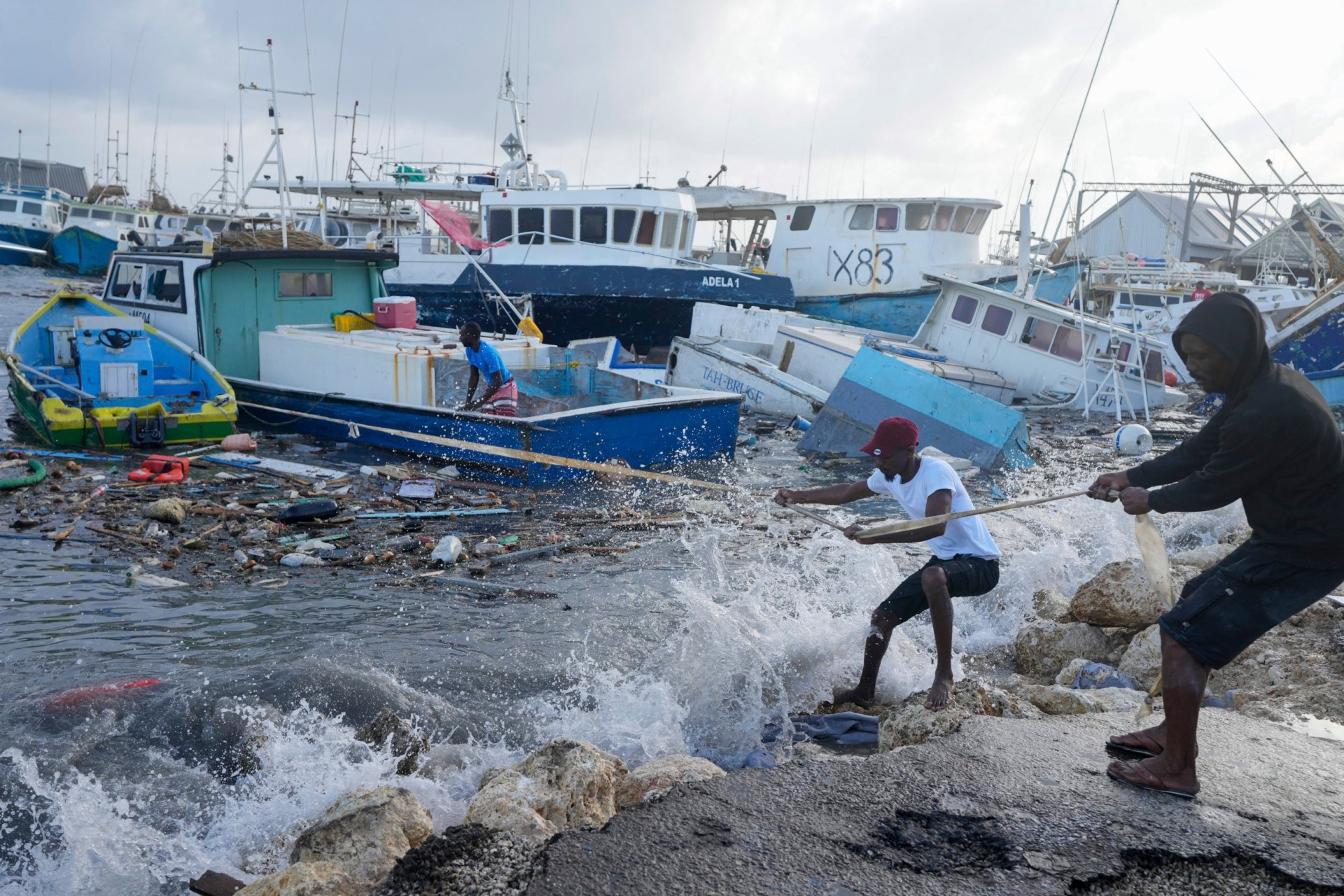
LATEST STORM PATH TRACKER SHOWS WHERE HURRICANE BERYL WILL HIT NEXT
Tracking data shows where Hurricane Beryl will strike next after it passed over and caused serious damage in the Caribbean.
The hurricane was classed as a Category 4 storm when it made landfall on Monday morning, slamming into Barbados, Grenada, and other West Indies islands.
It has since been upgraded to Category 5, driven by the Atlantic’s record warmth and devastating winds and storm surge as it heads towards the Gulf of Mexico.
And Beryl is now charging towards Jamaica after causing major damage to Caribbean islands, with at least one person killed and thousands of buildings damaged.
It’s predicted to hit Jamaica on Wednesday before reaching the Cayman Islands on Thursday.
Beryl has kicked off an exceptionally early hurricane season as the earliest Category 5 hurricane – and the second Atlantic storm of strength in July on record.
Metro.co.uk has all the latest details on the hurricane.
Where is Hurricane Beryl? Latest storm path tracker
Beryl’s centre is expected to move quickly across the south east and central Caribbean Sea on Tuesday, passing by Jamaica on Wednesday.
The latest bulletin from the National Hurricane Center said: ‘Beryl expected to bring life-threatening winds and storm surge to Jamaica on Wednesday.
‘Hurricane hunter aircraft report little change in strength over the past few hours.
As of 8am AST (12pm GMT) on Tuesday, Beryl is moving in a west-northwest direction at about 22mph (35kmph).
The hurricane is expected to keep moving rapidly in that direction on Tuesday and Wednesday, before turning west on Thursday.
Storm surges could raise water levels by as much as 6ft above normal in Jamaica, and by up to 3ft in the Cayman Islands and Hispaniola.
When and where is it expected to hit?
Hurricane Beryl has already hit Barbados, Grenada, and other West Indies islands.
The National Hurricane Center says: ‘On the forecast track, the centre of Beryl will move quickly across the southeastern and central Caribbean Sea today and is forecast to pass near Jamaica on Wednesday and the Cayman Islands on Thursday.
‘Beryl is a Category 5 hurricane on the Saffir-Simpson Hurricane Wind Scale.
‘Weakening should begin later today, but Beryl is still expected to be near major hurricane intensity as it passes near Jamaica and the Cayman Islands.
‘Additional weakening is expected thereafter, though Beryl is forecast to remain a hurricane in the northwestern Caribbean.’
What does Category 5 mean?
According to the National Hurricane Center, The Saffir-Simpson Hurricane Wind Scale is a 1 to 5 rating based on a hurricane’s maximum sustained wind speed.
This scale doesn’t take into account other potentially deadly hazards such as storm surge, rainfall flooding, and tornadoes, and estimates potential property damage.
While all hurricanes produce life-threatening winds, hurricanes rated Category 3 and higher are known as major hurricanes, which can cause devastating to catastrophic wind damage and significant loss of life simply due to the strength of their winds.
Hurricanes of all categories can produce deadly storm surge, rain-induced floods, and tornadoes.
These hazards require people to take protective action, including evacuating from areas vulnerable to storm surge.
How long do hurricanes last?
Hurricanes can last for two weeks or more if it’s moving over open water, gaining heat and energy from the warm ocean.
There are an average of 100 tropical disturbances between May and November each year over the Atlantic Ocean, with about six of those eventually becoming hurricanes.
All hurricanes start life as an area of low pressure in the atmosphere, but if suitable conditions exist the circulation may become more organised and wind speeds could increase.
Once wind speeds increase to 39mph it is classed as a tropical storm, and if they increase to 74mph the storm will be upgraded to a hurricane.
Once a hurricane makes landfall or reaches cooler waters it will lose energy until eventually disintegrating.
Get in touch with our news team by emailing us at [email protected].
For more stories like this, check our news page.
Get your need-to-know latest news, feel-good stories, analysis and more by signing up to Metro's News Updates newsletter
2024-07-02T13:27:34Z dg43tfdfdgfd